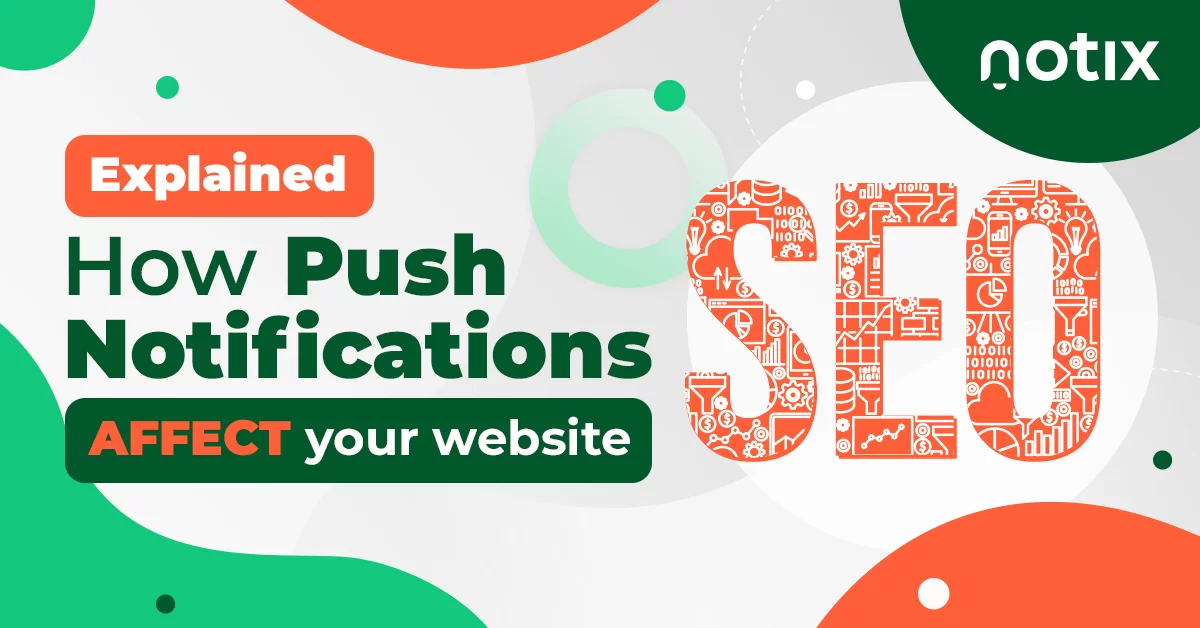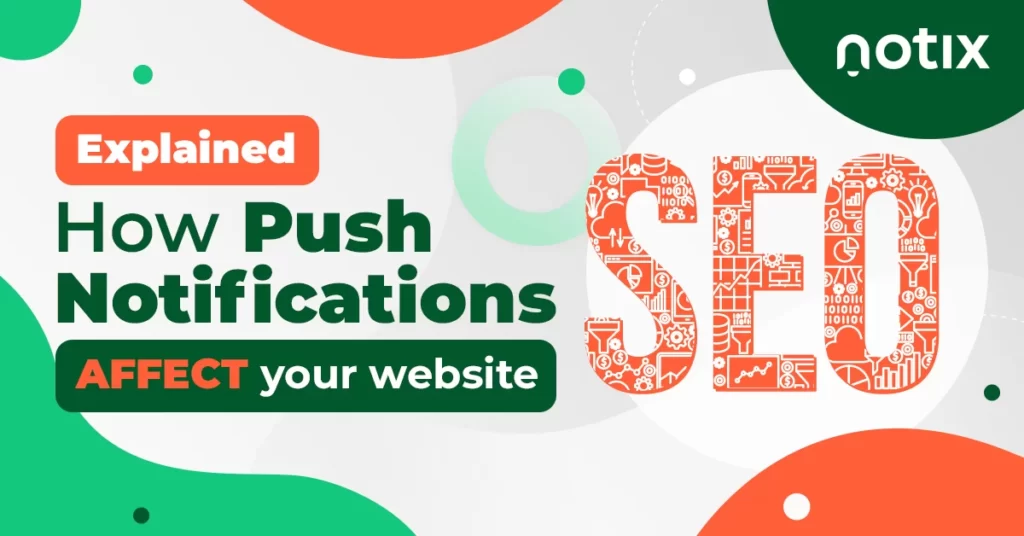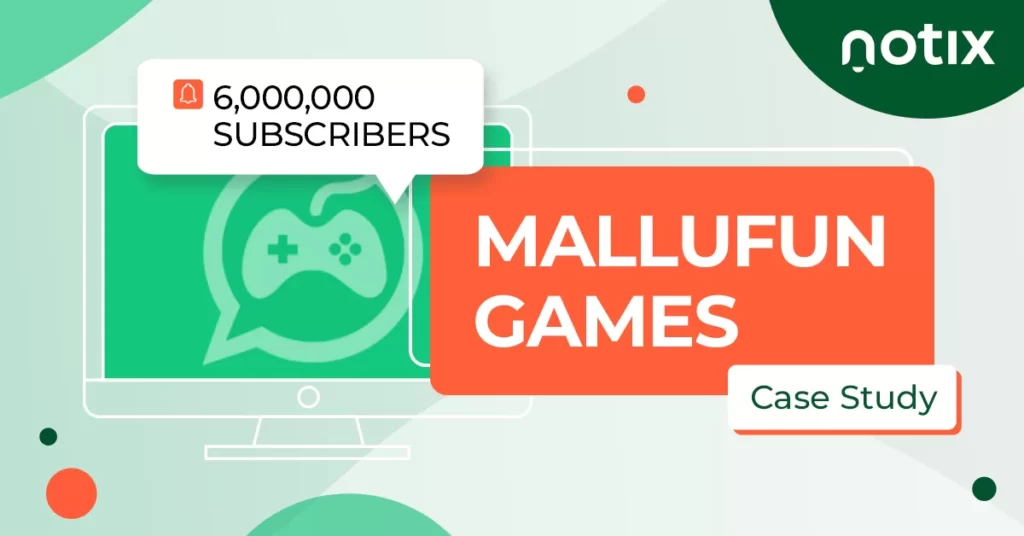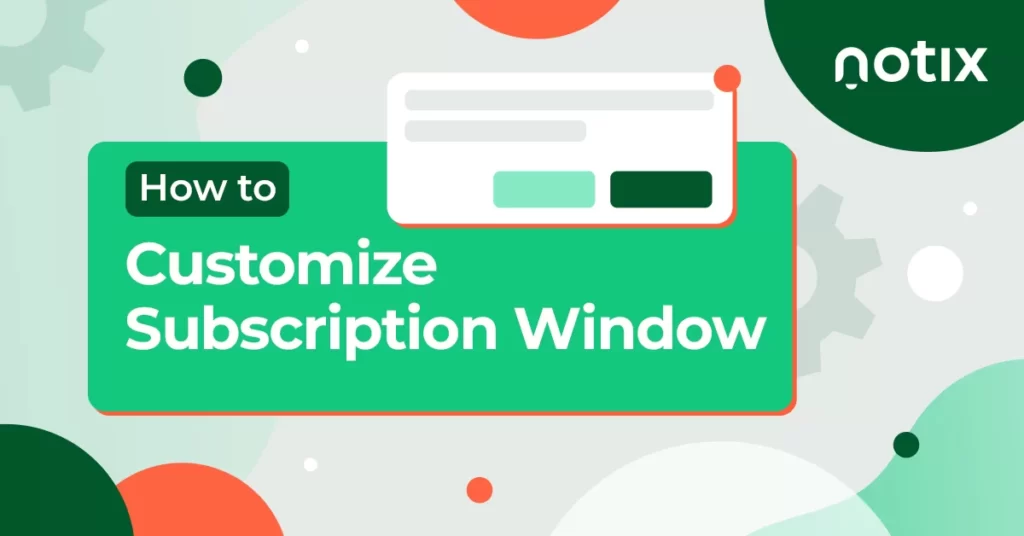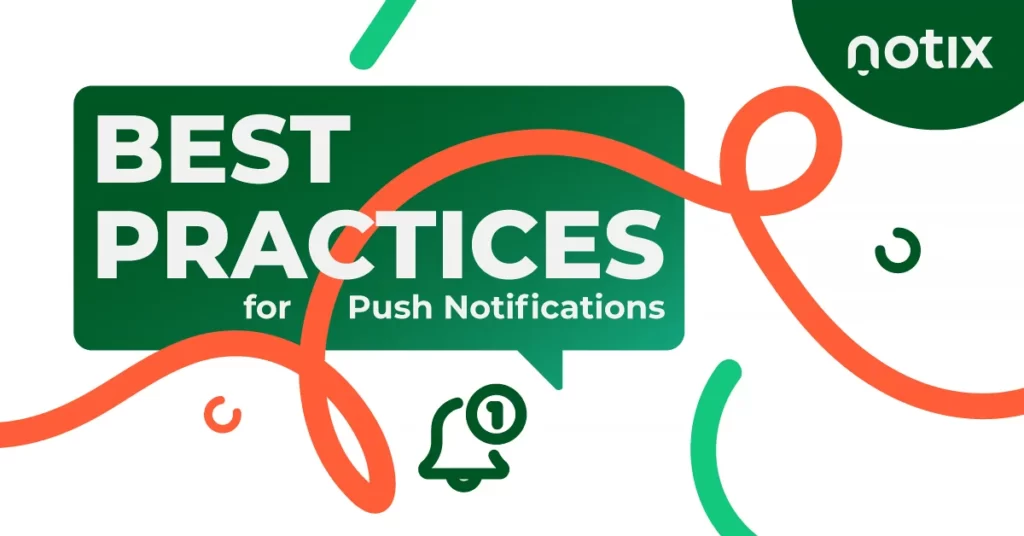When something works really well, people tend to get sceptical about it. And this is the case with Push Notifications. From myths about it affecting the SEO of a website, all the way to badly impacting the UX and even UI, it’s time we debunked some of the most common misbeliefs about this extremely versatile format.
So if you think that Push notifications can affect your website performance, this article is for you. As we’ll show you all the many ways in which they don’t.
Myth: Push Notifications will ruin your SEO
Push Notifications might not directly impact your Search Engine Optimization (SEO) efforts, at least not from what Google wants to admit. However, it certainly affects a lot of the factors which fuel your good Search Engine Result Page (SERP) ranking.
Here are all the many 2 ways in which Push Notifications contribute to the SEO of any website:
#1. Website Analytics
Contrary to common belief, this useful information helps you understand what happens to the user after they visit your website. These are the analytic factors that can improve your search engine ranking:
- Repeat Visit Rate
- Average Session Duration
- Page Views
- Increased Dwell time
- Bounce Rate
Google’s algorithm sees a site as more trustworthy when it has a higher repeat visit rate, average session duration and dwell time, and a lower bounce rate. And when a user is not on your website and receives a useful Push Notification, he’ll return.
Another relevant push notification will keep him longer on the website, and delay his return on the search engine (higher dwell rate). And with a lower bounce rate – which happens since returning users from push become more and more loyal to website content – the search engine will see better engagement.
Moreover, the high quality and relevant Push Notifications will make the users more devoted and hooked on your website content.
#2. Traffic
Drive re-engaged audiences
Returning users are very important for search engines. They show that your website is useful, and has authority.
Audience collection and segmentation
By properly segmenting your audiences you can better target your messages. And by only providing users with the relevant information you can increase your Conversion Rate, in case your business model includes sales (for example in the eCommerce segment).
Audience engagement
When users find your content relevant they tend to engage with it. Either by sharing or commenting on it. Both these actions contribute to how authoritative and relevant your website is. And all show in your ranking.
Myth: Push Notifications will disrupt your UX
Most people think that it’s because they disrupt their browsing session, by appearing on top of the website, or because too many of them appear and disrupt the user’s active session. Here are a couple of things about Push and UX:
#1. Opt-in Prompts display
Make sure to regulate the way this prompt appears – starting from its design, to its texts. Be clear in your content, and explain what perks users could get by subscribing to your notifications, what they can expect to receive.
For example, «Subscribe to receive the most breaking news of the day!».
Also, remember that you can change the delay before showing a subscription prompt, or initiate it after the user scrolled or clicked on the page. Remember to flexibly insert the push subscription prompt into the UX of someone that hasn’t yet subscribed.
#2. Push Notifications Frequency after the user subscribes
More is never better. Especially when it comes to highly effective formats like Push, which help your users get the main information from you. If you don’t want users to unsubscribe from your Push or even permanently leave your website, get to know them and adjust your frequency based on their needs. Otherwise, the UX myth becomes reality.
#3. Push Notifications and Website Speed
Push notifications can’t affect your page loading speed because they are managed by a very lightweight and fast loading tag and don’t take any extra space on the actual website. Because of that, Push Notifications could never affect your website speed, and implicitly UX this way.
#4. Push Notifications and other formats
The reality is that Push becomes a nuisance for UX only when used hastily. When it comes to using Push Notification along with other formats, it’s all about how you optimize these alerts.
If you manage to set them to appear at various, crucial moments during the time spent on the website, or away from it, you’ll improve your performance and definitely not disrupt UX. If not, this myth can become reality.
When Push Notifications are used effectively, all these remain myths. So keep in mind to only send Push when you have a scarce, exclusive, and urgent message. Don’t send too many, keep them short, and to the point. And only send relevant information. Otherwise, Push becomes UX disruptive.
Myth: Push Notifications will wreak UI
The User Interface (UI) represents all the little elements that dress up your website. From appealing buttons, colors, graphics, and everything in between. The more attractive your website, the better the UI.
However, when it comes to Push Notifications you can customize them to merge with your website design. From images to buttons and text, if you know what your users like you can catch their attention with Push.
If anything, Push notifications make your website that much pleasant. These eye-candy alerts, effectively grab the user’s attention and delight them with useful information.
User-Friendly Push Notifications Practices from Google
Push Notifications is a technology conceived by Google, so obviously they wouldn’t create it to sabotage SEO.
However, as every great tool in the wrong hands, it can be used badly. So, in order to ensure the best functioning of this format with high tech solutions like Notix, the tech giant made a series of recommendations for webmaster (which we fully endorse ourselves), for a more passive approach:
- Value proposition: integrating the prompt in the UI of the website, once they finalized an important step (purchase, newsletter subscription, follow, etc.)
- Making the notification prompt more UX friendly, by using a transparent background that allows the client to view the page while accepting your alerts
- Not invading the user’s website experience with an abusive prompt the second he gets on the website
- Investing in a double-permission system – one from the website that enables the actual push notification prompt the moment they accept the first
- Creating a Push Notification enabled button on the website settings panel
- On-page website button that allows the user to activate Push Notifications whenever during his visit on your page
You can read more about it here.
Main Takeaways
Although Google never confirmed that Push Notification positively affects websites’ SEO, there are a lot of factors showing just that. However, old practices like spamming users with a lot of push notifications used to affect SEO. Users left the website and didn’t return.
The right amount and message sent via Push Notifications can drive amazing results. Create tailored, specific, and personalized messages. Don’t send them in bulk, or at random times. Push Notifications are more than welcome when they are useful. Abuse them and they’ll chase users away.
However, practice makes perfect. And although mistakes might happen especially when this format isn’t used properly, this is not a rule of thumb. When used wisely Push Notifications are a great extra tool that can help any webmaster develop and grow the right audience and traffic for your website.
Only with the right setups, you’ve got the right tools to drive traffic and conversions, re-engage users, or even to improve website analytics and SEO.

 PT
PT EN
EN